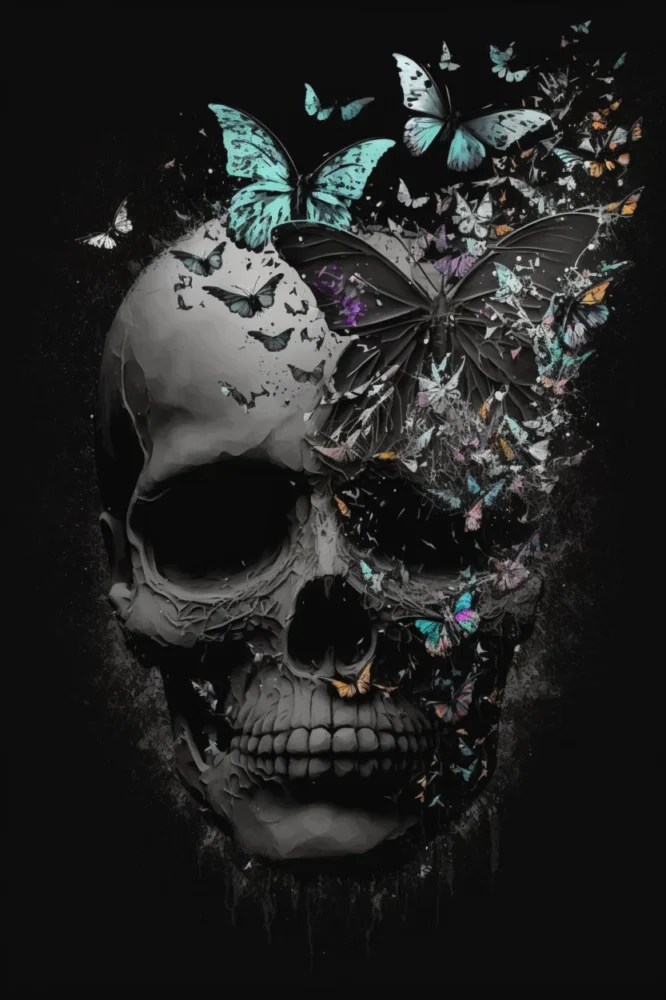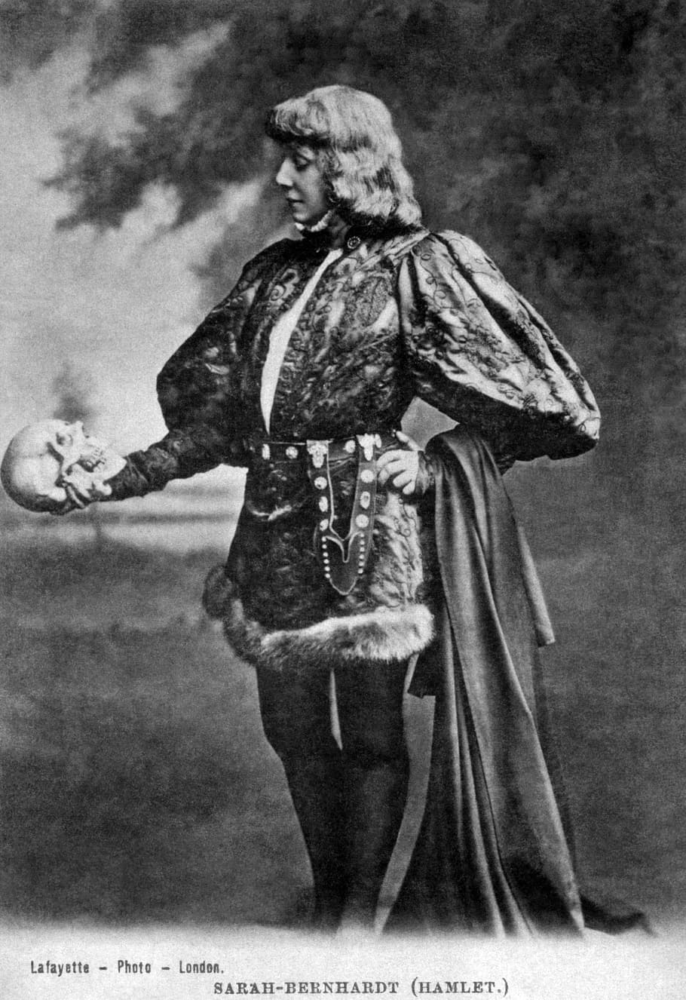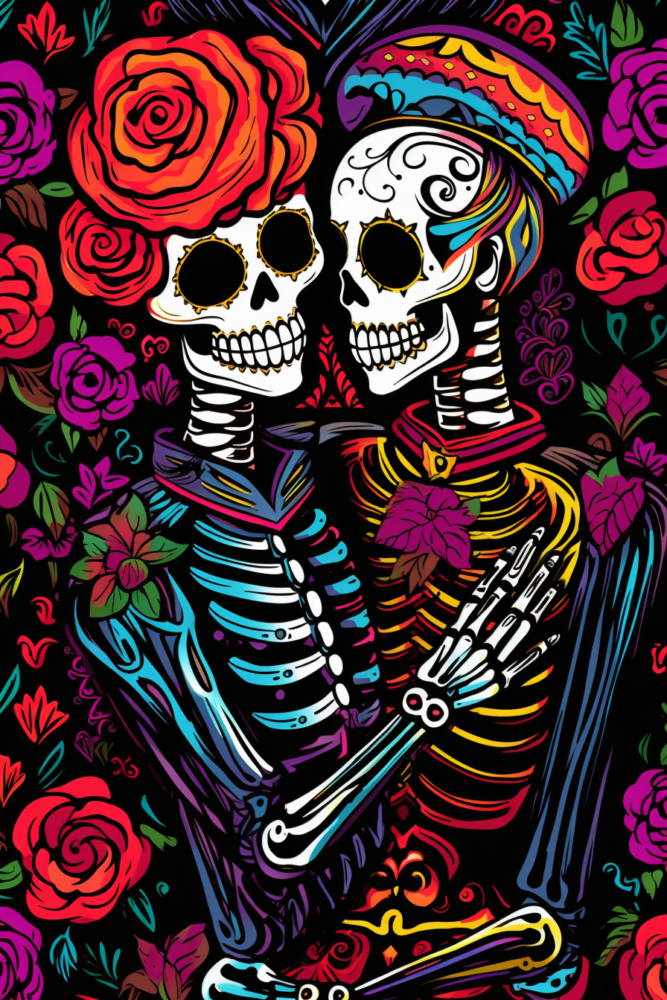The skull symbolism includes mortality, power, evil, transformation, rebellion, and transience of life. Its imagery is terrifying and unsettling, but skulls carry a lot of interesting meaning and even philosophical importance. In this article, we’ll explore the major symbolism of the skull and its use across cultures.
Popular Skull Symbolism Around The World
Mortality
The skull is the center of human soul and consciousness across many cultures and religions around the world. It is where our “operating system” seats, governing our experience of the world. When we see a skull, it means the operating system is no longer there, and there is no “human” in it anymore as it used to be. It is an eerie symbol of mortality, reminding us that we have a limited life on this world, and one day, everything we have will be stripped away to the skull when we depart this place.
In Western art and culture, particularly during the Middle Ages and Renaissance periods, skulls were commonly depicted as a symbol of mortality with the “Memento Mori” theme. Artists would create elaborate artworks featuring skulls alongside other objects like hourglasses, candles, or flowers to remind viewers of the inevitability of death and the transient nature of life.
Power

“For king and fatherland; freedom or death”
In ancient times, power was often proven through brutal battles where warriors fought to the death. Victors would take their enemy’s skull as a trophy, symbolizing control over their life force and showing dominance.
For example, Aztec rulers wore skull headdresses or carried skull-shaped scepters to show their authority and divine connection. In some Native American traditions, skulls were believed to ward off evil and offer spiritual protection.
The skull remains a symbol of power today. Wars and conflicts continue, and controlling an enemy’s life still represents immense power. In the 20th century, skull imagery appeared in military patches and emblems to symbolize strength, fearlessness, and the ability to conquer.
Secrecy

Power and secrecy often go hand in hand. Controlling information gives those in power a significant advantage, and the skull has become a symbol tied to this secrecy.
The Skull and Bones society, founded at Yale University in 1832, is one of the oldest secret societies in the U.S. Known as “Bones,” it selects a few senior students each year in a highly secretive process. Members, called “Bonesmen,” are sworn to keep the society’s rituals and activities confidential. Many influential figures, including U.S. presidents and business leaders, have been members, making the society both powerful and mysterious. The society’s meeting place, the “Tomb,” remains closed to outsiders.
The use of the skull symbol by the society signifies the power granted to members and the secrecy they must uphold. Breaking this secrecy could bring serious consequences, reinforcing the link between power, mystery, and control.
Transformation

Death is not a one-off event, but rather a point in infinity where the human soul takes a temporary rest to prepare for their next life, according to many Eastern cultures. The concept of reincarnation is quite prevalent in these regions, and therefore skulls came to also symbolize transformation and spiritual growth besides their original meaning of mortality.
In Hindu Tantra and Buddhist Tantra, a kapala, which means “skull” in Sanskrit, is a bowl-shaped cup used for rituals . In Tibet, kapalas are often adorned with valuable materials and gemstones. They serve esoteric purposes, such as facilitating higher tantric meditation to attain a transcendent state of mind quickly and offering libations to gods and deities to seek their favor.
Goddess Kali is often depicted as a fearsome and ferocious goddess with a dark complexion and a protruding tongue. Kali is associated with destruction, transformation, and the fierce aspects of the divine feminin. Kali wears a mundamala, a garland made of human skulls, embodying the destructive force of time, reminding humans of the impermanence of all things. It also symbolizes her role as a fierce protector against evil forces and negativity, annihilating ignorance, ego, and the forces that hinder spiritual growth.
Another appearance of the skulls in Hinduism is on the khatvanga. Dakshinamurti, a form of Lord Shiva as the Supreme Teacher, is often depicted sitting in a meditative pose with the “khatvanga“, a staff crafted from skulls. It represents the detachment from worldly attachments and the realization of the ultimate truth.
Rebellion

Death is a taboo topic in many cultures because it represents the “ultimate unknown.” People fear confronting their own mortality, which is why using skull imagery is a rebellious act. Wearing skull symbols challenges one of society’s deepest taboos, making it a powerful statement of defiance.
Skulls became a key symbol in subversive art, punk, heavy metal, and underground street art. Artists and musicians used the skull to express dissatisfaction with societal norms and embrace anti-establishment ideals. It became an icon of rebellion and unconventional thinking.
The skull also became popular in biker and tattoo culture. After World War II, returning soldiers formed motorcycle clubs to seek freedom and adventure. Known as “outlaw bikers,” they embraced skull imagery to represent their willingness to face danger and live on their own terms.
One of the most famous biker groups, the Hells Angels, was founded in 1948 in California. Their logo features a skull with a winged helmet, symbolizing their rugged, rebellious spirit and fearless lifestyle. Skulls remain a core symbol of independence and counterculture to this day.

Evil
Due to their association with the negative aspects of death, skulls have become the representation of evil – the harbinger of death in an unpleasant way. One of its most popular use is in the well-known pirate flag that features a human skull and 2 crossbones. This flag is called the Jolly Roger, which pirates would hang before they launch an attack.

Interesting, pirates didn’t always display the Jolly Roger flag. They usually had various flags on their ships and would hide their true identity until they were close to their target. Then, they would raise the Jolly Roger and sometimes fire a warning shot. The purpose of the Jolly Roger was likely to let other ships know they were dealing with pirates. This gave the targeted ships a chance to surrender without a fight. In a way, this is also how pirates establish their notoriety as an aggressive and merciless force on the sea.
In popular culture, especially within literature, films, and other forms of media, skulls are used to represent evil or antagonistic characters. Skull imagery is usually associated with villains, monsters, or supernatural entities, symbolizing their malevolence and intent to harm. For example, The Terminator robot from The Terminator franchise is an advanced machine with a distinct skeletal appearance that evokes fear and intimidation in others.

Transience Of Life
“Memento mori” gained prominence as a phrase supposedly used after an army won a battle. A slave would be called from the troops to stand beside the victorious general. He would declare, “Remember that you, too, will die,” reminding the powerful of their human fragility even in their moment of triumph.
This idea was further developed in Christian tradition by artists who incorporated various symbols, such as skulls and ripening fruit, into funeral art and architecture. Patrick mentioned his interest in this theme during his time at Sotheby’s and found it timely to explore, especially with Ash Wednesday and Lent approaching.
Here the skull serves as a symbol of the fleeting nature of life. It reminds us that life is impermanent and that death is an inevitable part of our human existence. The skull serves as a powerful visual reminder to reflect on our mortality and to appreciate the preciousness of the time we have.
Danger
The rise of industrialization in the 19th and 20th centuries brought with it new dangers and risks in the workplace. Skull imagery was sometimes used in cautionary signs, posters, and safety campaigns to raise awareness about workplace hazards and the potential for fatal accidents. The skull served as a stark reminder of the life-threatening consequences of industrial work.

The skull-and-crossbones symbol, which includes a human skull and crossed bones behind it, is commonly used today as a warning sign for potential death or danger, especially in relation to poisonous substances. This symbol, or variations of it with bones or swords below the skull, was also prominently featured on the Jolly Roger, the traditional flag used by European and American seafaring pirates.
In Canada, you can find a similar symbol called WHMIS on containers to indicate that the contents are poisonous. In the United States, there are concerns that associating the skull-and-crossbones symbol with pirates might encourage children to handle toxic materials, so the Mr. Yuk symbol is also utilized to signify poison.
Skull Symbolism In Literature

In Gothic literature, skulls are often employed to create a sense of macabre and to emphasize themes of decay and mortality. They can be found in works like Edgar Allan Poe’s “The Masque of the Red Death” and Mary Shelley’s “Frankenstein,” where they contribute to the eerie atmosphere and explore the darker aspects of human existence.
In several of William Shakespeare’s tragedies, such as “Hamlet” and “Macbeth,” skulls symbolism are used to represent mortality and the inevitability of death, particularly in the famous scene known as the “Graveyard Scene” or “Yorick’s Skull.” Here, Hamlet encounters a skull, which is revealed to be the remains of Yorick, the court jester who was once a familiar figure in Hamlet’s life.
The sight of the skull prompts Hamlet to ponder the impermanence of worldly things and the insignificance of human achievements. It triggers his existential contemplation about the nature of life, the purpose of existence, and the futility of human endeavors in the face of death.
Skull Symbolism In Art

During the Medieval and Renaissance periods, the skull motif became popular in Western art, particularly in Vanitas paintings. These artworks aimed to express the emptiness and fleeting nature of earthly pleasures. By juxtaposing beautiful flowers, ripe fruits, valuable objects, and attractive female figures with bare skulls, artists conveyed the idea that no matter how appealing or wealthy one may be, death is inevitable.
This can be seen as a reaction to the materialism and hedonism of the time. The rise of trade and wealth during the Renaissance led to an increased focus on worldly possessions and pleasure. The Vanitas artworks served as moralizing reminders that material wealth and physical beauty are fleeting and ultimately meaningless in the face of death.
In later centuries, European artists remained captivated by the symbolism and aesthetic appeal of skulls. Paul Cézanne and Pablo Picasso, among others, found inspiration in the form of skulls, incorporating them into their works with meticulous study and evoking the atmosphere of the Vanitas style.
Then, in the 20th century, the skull entered the realm of design and fashion, thanks in part to its use in propaganda art during World War II. This integration into mainstream decorative design and pop art contributed to the skull’s continued popularity today.
Skulls Symbolism In Politics

During the 19th and early 20th centuries, skulls were used as symbols of rebellion and revolution. They represented a rejection of oppressive regimes and a call for social and political change. Revolutionary groups, such as anarchists and communists, adopted the skull as a powerful image to rally their supporters and challenge the status quo.
Many political cartoons and satirical illustrations make great use of the skull imagery to criticize political figures. Here the skulls symbolize death, corruption, and the impending doom of the leaders. Sometimes the skull is also the metaphor for the level of death and destruction caused by these leaders.
Skulls In Mexican Cultures

In Mexican culture, the skull takes on a more positive light and is featured in many celebrations. One notable example is the Day of the Dead (Día de los Muertos), a vibrant and joyful holiday celebrated in Mexico. During this time, elaborately decorated skulls, known as sugar skulls (calaveras de azúcar), are created as offerings to honor and remember deceased loved ones.
The skull symbolism here is not only about death, but also about life. It is believed that by celebrating and remembering the departed, their spirits can return to the earthly realm to be reunited with their families. The skulls are often adorned with colorful designs, flowers, and other decorative elements, representing the festive and lively nature of the holiday.
Skull symbolism is also seen in Mexican folk art, such as in the intricate patterns of ceramic skulls and in papel picado, a form of decorative paper cutting. These artistic representations of skulls highlight the rich cultural heritage of Mexico and its deep-rooted connection to honoring ancestors and embracing the continuum of life.


 using WordPress and
using WordPress and
Comments are closed